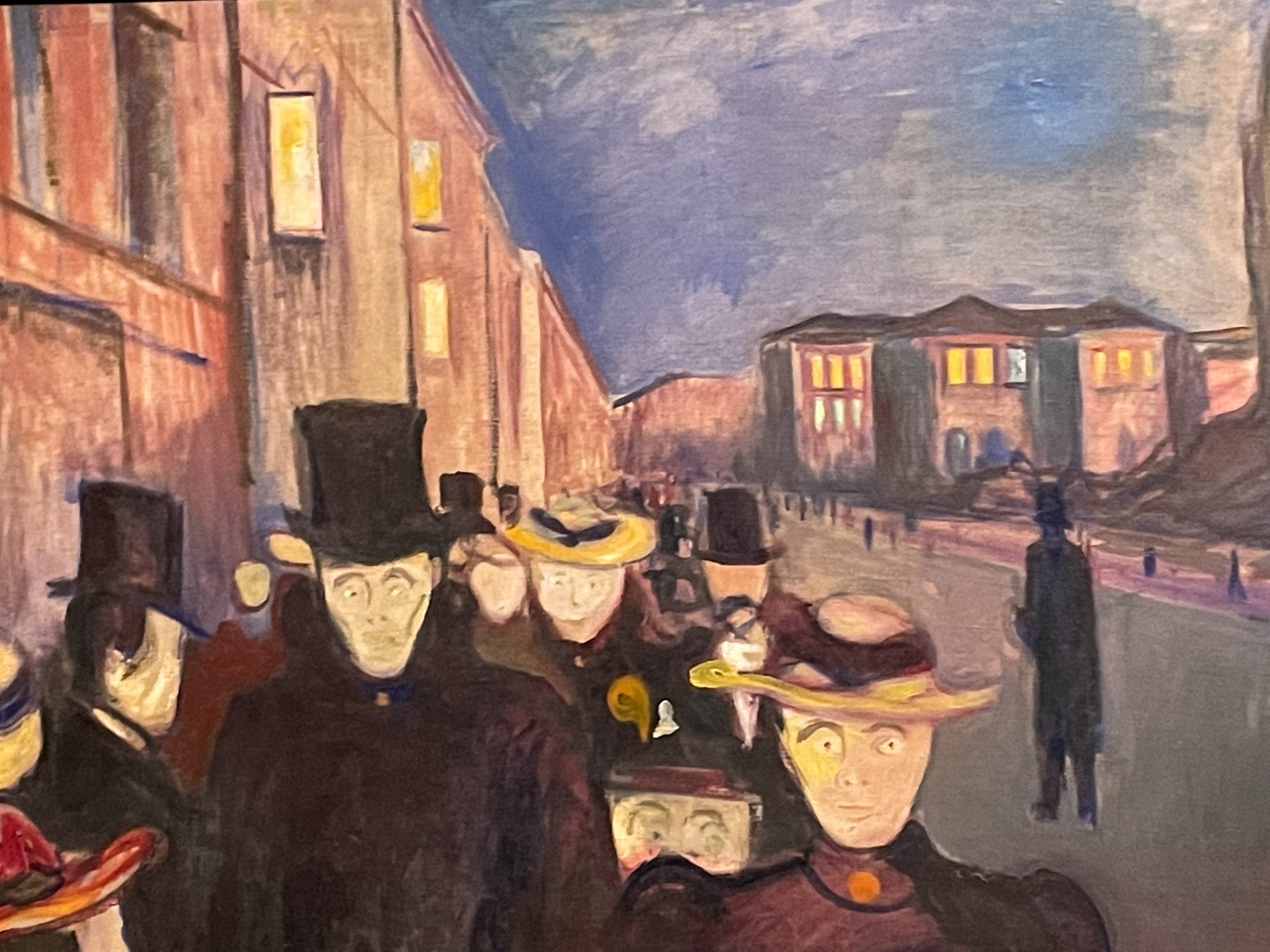A silent scream- Munch in Orsay
There are plenty of places where screams are not expected, and even frowned up. At a Munch exhibition though, it can feel almost sacrilege not to have a Scream. The current exhibition in the Musée d’Orsay in Paris doesn’t include any of the 4 painted versions of the Scream, and I think that’s actually a good thing.
From masks in movie franchises to emojis on smartphones, the face of the Scream has become iconic, a shorthand for anxiety, terror or despair. It deserves this fame of course: rarely have works of art captured so well the agony of being human. But it can also cast a long shadow over Munch’s entire body of work. Without the overwhelming pull of what is undoubtedly one of the most well-known paintings in the world, it is possible to see Munch fully, to explore his vision, diving deep into what Orsay calls “a poem of life, love and death”. And Munch’s universe is fascinating, poignant, and haunting. This exhibition will leave no one unscathed and unmoved.
Life, love and death do feature in all of his works: From haunted portraits, to scenes of domestic dramas, from images of vampire women, and melancholic depictions of disease and death, Munch is an obsessive painter, returning again and again to the same ideas, the same motifs. There is something irresistibly human in his grappling with love and death. His work is urgent, existential, intense.
This anguish translates into the mark making and visual choices: Faces are reduced to simple traits, but still capture the essence of the characters, their emotions amplified by the spareness of the details. Backgrounds often breakdown into concentric lines of colour, focusing the attention on the figures in the image, and adding to the claustrophobic atmosphere. Munch was a printmaker as well as a painter, and a room explores his use of printmaking techniques, and how they allowed to explore repetitions and variations on his themes.
But it is not all gloom and sorrow: In a series of paintings called the frieze of life, he explores themes of rebirth and the eternity of life just as compulsively- and convulsively - as he does the inevitability of death. In some other images, couples danse on the seashore as the sun sets, group of girls gather on a bright sunlit bridge, and the sun irradiates barren landscapes.
The Scream is not totally absent either- none of the painted versions are here, but the exhibition includes a small sketch of it, which inevitably draws large crowds. On the wall above is a poem Munch wrote about the experience and emotions he felt before creating his masterpiece, and the text is as compelling as the image:
I was walking along the road with two friends. The Sun was setting –
The Sky turned a bloody red
And I felt a whiff of Melancholy – I stood
Still, deathly tired – over the blue-black
Fjord and City hung Blood and Tongues of Fire
My Friends walked on – I remained behind
– shivering with Anxiety – I felt the great Scream in Nature
Quotes and poems by Munch are scattered on the walls through the exhibition, accompanying and complementing the works by allowing us glimpses in the mind of the artist. The words are thoughtful and visceral, their author almost as expressive with a pen as he is with a paintbrush.
Munch: a poem of life, love and death is open at Musée d’Orsay until 22nd January 2023.

